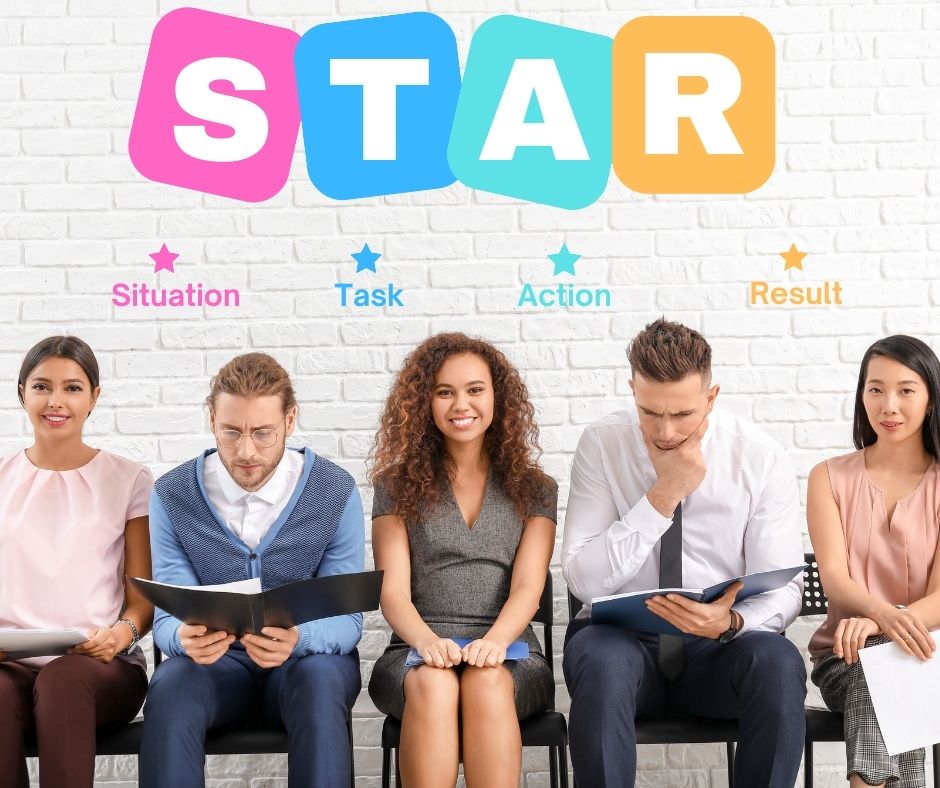
The Star Method
Regardless of the job you’re applying for, most interviewers will at some point ask you to describe a time when you had to cope with a difficult situation and how you overcame it, or some variation.
This is one of the most popular competency- based questions and allows employers to assess such skills as leadership, initiative, composure, teamwork, customer service and problem solving under pressure. Companies want to employ a candidate who does not just have the education and theoretical knowledge demanded from the role, but the ability to do actually do the job in real life.
Your answer should therefore contain a beginning, middle and end and draw from historic examples in your life (generally either employment or education related), where you share the dilemma, your proactive reaction and the positive outcome you achieved.
Under the pressure of an interview however, it can be hard to remember random events that showcase your skills, let alone a detailed anecdote. It’s easy to ramble, get lost, or forget key elements of your story. Many candidates may over elaborate on the situation and how they acted but completely forget to conclude it with the positive outcome. What did the achieve?
This is why it’s really helpful to have a method to remember all the important elements of an impressive, showcasing story.

How Does the STAR Method Help
The STAR method stands for Situation, Task, Action and Result and provides you with a framework to help structure a focussed and concise answer.
It will also help you recall every detail you need in order to show yourself in the best possible light by demonstrating real life examples of how you can successfully overcome challenges.
You will be able to break down a rehearsed response into sections which will be easier to remember, while having the cues to ensure you are covering every part of the answer that your employer is looking for.
Remember, the STAR method is meant to be simple and prevent rambling replies with lots of irrelevant information. So try to keep to just a few sentences for each letter of the acronym.
Breaking Down the Star Method
Situation
This is the scene setting part of your story. Here you want to provide context to the rest of the story by describing;
- the situation you were in,
- what caused the challenge
- the role you occupied at the time
Keep this part concise and try to avoid any extra irrelevant information, while including names and dates will add credibility to your reply.

Task
This is the part of the story where you’re describing your involvement in the situation and what goal you were working towards.
The Task element of the STAR method can easily get confused with the Action stage, however this section should be dedicated to giving the specifics of what your responsibilities were at the time. Include;
- the specific task you had to achieve in the situation
- What your responsibilities were

Action
Here you want to really showcase your contribution to achieving a positive outcome and the problem solving abilities that helped to resolve a challenging situation.
Key to this section is being able to demonstrate how you employed the skills that the interviewer is looking for (which you can find in the job role synopsis) in a real-life practical situation. Focus on your specific contribution in detail, rather than that of the team, and include;
- The actions you took to address the situation
- The specific steps you took
- The decisions you made
- How you overcame any particular challenges

Result
This is the most important part of the answer, and without the STAR interview method often gets forgotten.
You want to conclude your anecdote with the outcome of your actions and why what you did actually mattered. If possible, providing quantifiable benefits, numbers and statistics will give added impact, as will any positive feedback you received.
Highlight as many positives as you can and look to include;
- What happened in the end?
- What did you accomplish?
- What did you learn (if anything?)
- Any long-term benefits
- Beneficial statistics
- How your choices, actions and decisions led to a successful resolution

